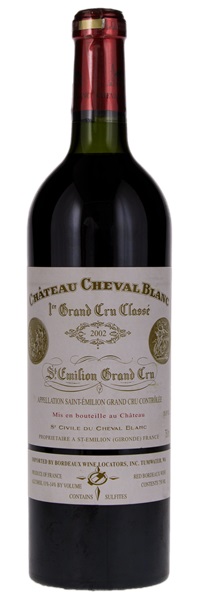Estimate

Fantastic aromas of black licorice and sweet tobacco change to raspberries and follow through to a full-bodied palate, with lovely silky tannins and a long, caressing finish. Multilayered. A beauty.
...Silky and nicely concentrated, with strong minerality and lively acidity framing the flavors. Not a hugely ripe or opulent Cheval, but understated and classy. Finishes with rather suave tannins and a whiplash of flavor.
Possessing sweet tannin, medium body, and undeniable elegance as well as nobility...
Solid, savoury, quite demanding quality. Readable and good and long.